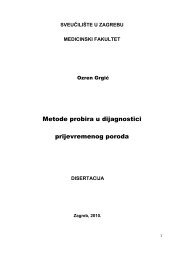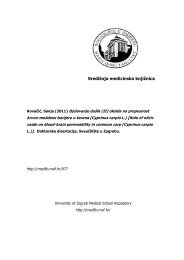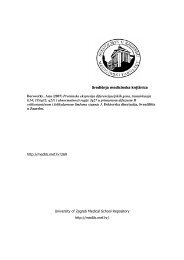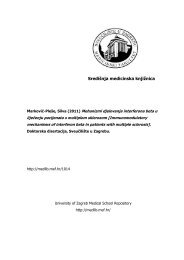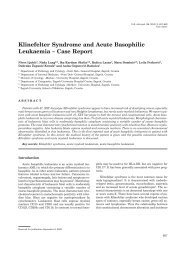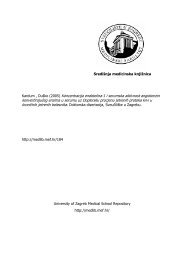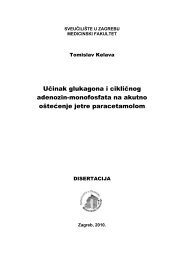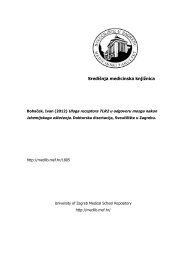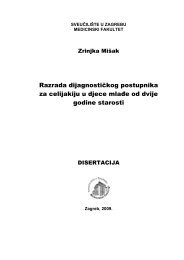Algorithm for classification and treatment of poststernotomy wound ...
Algorithm for classification and treatment of poststernotomy wound ...
Algorithm for classification and treatment of poststernotomy wound ...
You also want an ePaper? Increase the reach of your titles
YUMPU automatically turns print PDFs into web optimized ePapers that Google loves.
elated to the VRAM flap, but both patients refused reoperation. Minor abdominal wallweaknesses were <strong>of</strong>ten noticed in association with the VRAM reconstruction in the distal part<strong>of</strong> the abdomen, <strong>and</strong> axillary hollows (Figure 2) were related to the transposition <strong>and</strong>advancement flap <strong>of</strong> pectoralis major with resection <strong>of</strong> the humeral attachment in 5/8 cases.The overall satisfaction in 24 patients was high (Table III).DiscussionThere is no single ideal <strong>treatment</strong> <strong>for</strong> all cases <strong>of</strong> sternal <strong>wound</strong> infection. For this reason,proper <strong>classification</strong> should logically suggest the <strong>treatment</strong> modalities. As far as we know,there are three <strong>classification</strong>s about this entity.The <strong>classification</strong>sThe <strong>classification</strong> <strong>of</strong> El Oakley <strong>and</strong> Wright [4] is related to the time that the mediastinitispresents, <strong>and</strong> the presence or absence <strong>of</strong> risk factors, with no distinction between a stable <strong>and</strong>unstable sternum.That <strong>of</strong> Pairolero et al. [8] is chronological. Type I occurs within days after operation,type II within the first few weeks <strong>and</strong> type III occurs months to years later.The <strong>classification</strong> made by Jones et al. [12] considers the exact <strong>wound</strong>, but the flaw intheir <strong>classification</strong> is the failure to classify separately sterile instability <strong>of</strong> the sternum orsterile <strong>wound</strong> dehiscence with viable bone, which is said to be present in 60% <strong>of</strong> patients[13]. This distinction is important <strong>for</strong> <strong>treatment</strong>. There is however, an unnecessary distinctionbetween two superficial types <strong>of</strong> <strong>wound</strong>s (1A <strong>and</strong> 1B). A further objection is the lack <strong>of</strong>definition <strong>of</strong> mediastinitis, as Pairolero et al. <strong>and</strong> El Oakley <strong>and</strong> Wright have done.Mediastinitis is defined by El Oakley <strong>and</strong> Wright as a “<strong>wound</strong> infection associatedwith sternal osteomyelitis with or without infected retrosternal space”, which means that theymake no clear distinction between sternal osteitis <strong>and</strong> mediastinitis. We think that




